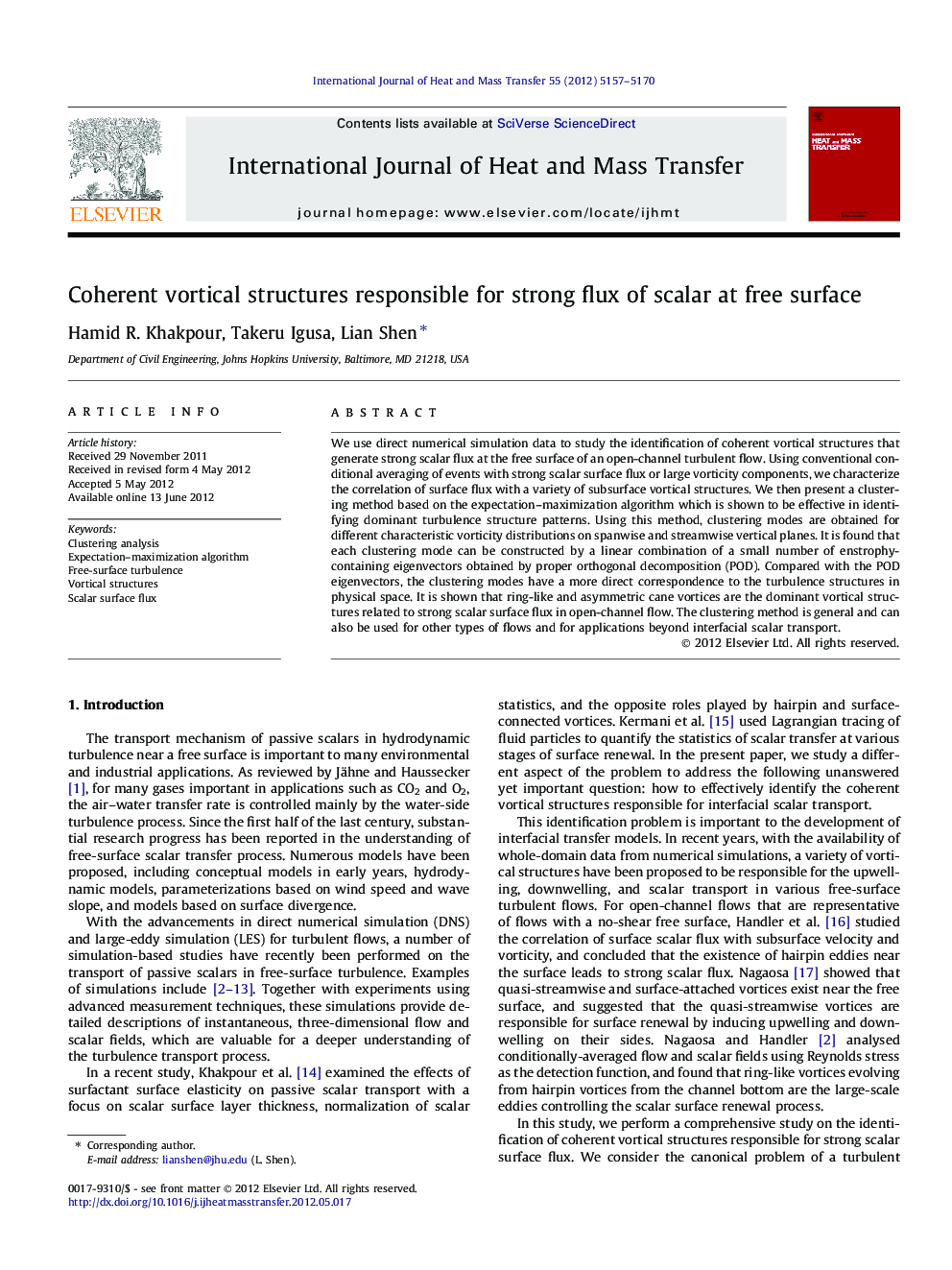| Article ID | Journal | Published Year | Pages | File Type |
|---|---|---|---|---|
| 658635 | International Journal of Heat and Mass Transfer | 2012 | 14 Pages |
Abstract
We use direct numerical simulation data to study the identification of coherent vortical structures that generate strong scalar flux at the free surface of an open-channel turbulent flow. Using conventional conditional averaging of events with strong scalar surface flux or large vorticity components, we characterize the correlation of surface flux with a variety of subsurface vortical structures. We then present a clustering method based on the expectation-maximization algorithm which is shown to be effective in identifying dominant turbulence structure patterns. Using this method, clustering modes are obtained for different characteristic vorticity distributions on spanwise and streamwise vertical planes. It is found that each clustering mode can be constructed by a linear combination of a small number of enstrophy-containing eigenvectors obtained by proper orthogonal decomposition (POD). Compared with the POD eigenvectors, the clustering modes have a more direct correspondence to the turbulence structures in physical space. It is shown that ring-like and asymmetric cane vortices are the dominant vortical structures related to strong scalar surface flux in open-channel flow. The clustering method is general and can also be used for other types of flows and for applications beyond interfacial scalar transport.
Related Topics
Physical Sciences and Engineering
Chemical Engineering
Fluid Flow and Transfer Processes
Authors
Hamid R. Khakpour, Takeru Igusa, Lian Shen,
